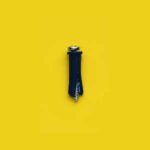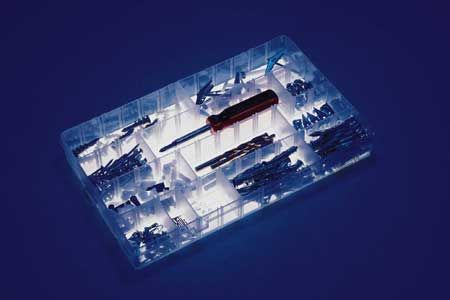Choosing the right fastener for your project can make the difference between a secure installation and a potential hazard. Whether you’re hanging a picture frame, installing shelves, or mounting a heavy mirror, knowing which fastener to use is the first step. This guide will walk you through the various types of fasteners, their applications, and how to choose the best one for your needs.
Understanding the Different Types of Fasteners
Fasteners come in several shapes, sizes, and materials, each designed for a specific purpose. Let’s explore some common types you’ll encounter in household projects.
Screws and Bolts
Screws and bolts are threaded fasteners that have strong holding power. Screws are typically used in wood and drywall, while bolts are often paired with nuts for applications requiring high strength.
Common types of screws include the following:
- Drywall screws
- Machine screws
- Sheet metal screws
- Wood screws
Bolts are available in various styles, such as the following:
- Carriage bolts
- Hex bolts
- Lag bolts
Nails and Staples
Nails and staples are simple, quick-to-use fasteners ideal for many woodworking and construction projects. They offer less holding power than screws but are often sufficient for lighter loads. These are some popular nail types:
- Brad nails
- Common nails
- Finish nails
- Roofing nails
Staples are typically used for upholstery, insulation, and light carpentry work.

Anchors and Toggle Bolts
Anchors and toggle bolts are specialized fasteners designed for use in hollow walls or materials that can’t support screws alone. These are some common anchor types:

- Molly bolts
- Plastic expansion anchors
- Self-drilling anchors
- Toggle bolts
These fasteners expand or spread behind the wall surface, distributing the load and providing a secure hold.
Selecting the Right Fasteners
Choosing the right fastener involves more than just picking the right size. Several factors come into play for a safe and effective installation.
Material Compatibility
The material you’re fastening to plays a big role in fastener selection. Here are a few examples:
- Drywall: Use anchors or toggle bolts for heavier items and specialized drywall screws for lighter loads.
- Masonry: This requires specialized masonry anchors or concrete screws.
- Metal: Self-tapping screws or bolts with nuts are typically best.
- Wood: Screws and nails work well, with coarse-threaded screws offering the best grip.
Always double-check that the fastener material is compatible with the base material to prevent corrosion or other chemical reactions.
Load-Bearing Capacity
Consider the weight of the item you’re hanging or mounting. Fasteners have different load ratings, and you should choose one that can safely support your item. Follow these guidelines:
- Light loads (under 10 pounds): Picture hangers or small screws may suffice
- Medium loads (10-25 pounds): Larger screws or small anchors are typically needed
- Heavy loads (25-50 pounds or more): Heavy-duty anchors, toggle bolts, or multiple fasteners are needed to distribute weight
Always err on the side of caution and choose a fastener rated for more weight than you think you need.
Environmental Conditions
The environment where the fastener will be used can affect its performance and longevity. Consider factors such as the following:
- Chemical exposure: In areas with harsh chemicals, select fasteners made from compatible materials.
- Moisture: In damp areas, use corrosion-resistant fasteners like stainless steel or galvanized options.
- Outdoor use: Opt for weather-resistant materials and coatings.
- Temperature fluctuations: Choose fasteners that can withstand expansion and contraction.
Fasteners for Specific Wall Types
Different wall materials require specific fastener types. Each type of wall—drywall, plaster, and masonry—has its own best practices for fastener usage.
Drywall Fasteners
Drywall, being relatively soft and hollow, requires special fastener considerations. You can use nail-in hooks for picture frames up to 20 pounds and screw-in anchors for items like smoke alarms or lightweight shelving.
For heavier items, consider molly bolts or toggle bolts for towel racks or heavy-duty shelving and screw-in anchors with flat-mount hooks for heavy pictures.
Plaster Wall Fasteners
Plaster walls, often found in older homes, can be more challenging to work with. Use plastic sleeves with #6 or #8 panhead screws for lighter items and opt for molly bolts or toggle bolts for heavier loads like towel racks or curtain rod supports.
Masonry Fasteners
For brick, concrete, or stone walls, you’ll need specialized masonry fasteners. Expanding plastic sleeves work well for light to medium loads, concrete screws or anchors are suitable for heavier items, and chemical anchors provide a good hold for very heavy loads. Always pre-drill holes in masonry to prevent cracking and ensure proper fastener fit.
Choosing Fasteners for Common Household Projects
Let’s look at some typical household projects and the best fastener choices for each.
Picture Hanging Solutions
For most picture frames, a simple nail-in hook can suffice. However, for heavier frames or in plaster walls, consider screw-in anchors with flat-mount hooks for drywall and plastic sleeves with #6 or #8 panhead screws for plaster walls.
Shelf Installation Fasteners
Shelf installation often requires stronger support. Depending on the shelf weight and wall type, these are the fasteners you’ll need:
- For lightweight shelving in drywall, use screw-in anchors.
- In plaster walls, opt for plastic sleeves that accept #8 screws.
- For heavy-duty shelving, use molly bolts or toggle bolts in both drywall and plaster.
Always check the weight capacity of your shelves and choose fasteners accordingly.
Mirror Mounting Options
Mirrors can be heavy and potentially dangerous if not properly secured. For safe installation, follow these recommendations:
- For mirrors up to 20 pounds, use screw-in anchors with #6, 1 1/2-inch panhead screws and mirror clips in drywall.
- In plaster walls, use plastic sleeves with the same screws and clips.
- For mirrors over 20 pounds, use screw-in anchors or molly bolts with mirror clips and mirror mastic in drywall.
- In plaster, opt for molly bolts with mirror clips and mastic.
Always use multiple anchor points for larger mirrors to distribute the weight evenly.
Tools and Techniques for Fastener Installation
Proper installation is just as important as choosing the right fastener. Having the right tools and knowing how to use them leads to a secure and professional-looking result.
Essential Tools for Fastener Use
A well-equipped toolbox for fastener installation should include the following:
- Allen wrenches (for certain types of screws and bolts)
- Drill with various drill bits
- Hammer
- Level
- Pliers
- Screwdrivers (both flathead and Phillips head)
- Stud finder
- Tape measure
Proper Installation Methods
Follow these general guidelines for fastener installation:
- Locate studs when possible for maximum strength.
- Pre-drill holes to prevent splitting in wood or cracking in drywall and plaster.
- Confirm the fastener is the correct length—long enough for a secure hold but not so long it protrudes through the other side.
- Don’t overtighten screws or bolts, as this can strip the threads or damage the wall.
- For anchors, follow the manufacturer’s instructions carefully, as installation methods vary.
Safety Considerations When Working With Fasteners
Safety should always be a priority when working with fasteners. Here are some key safety tips:
- Before drilling or hammering, keep aware of what’s behind the wall to avoid hitting electrical wires or pipes.
- Keep your work area clean and organized to prevent tripping hazards.
- Store fasteners out of reach of children and pets.
- Use a ladder or step stool properly when working at height.
- Use work gloves to prevent cuts and scrapes.
- Wear safety glasses to protect your eyes from debris.
Specialty Fasteners for Unique Applications
Some projects require specialized fasteners designed for specific uses. A few of those specific fasteners include:
Furniture Assembly Fasteners
Furniture often comes with specialized fasteners. Common types include the following:
- Cam locks and cam screws for flat-pack furniture
- Confirmat screws for particleboard or MDF
- Dowels for joining wood pieces
- T-nuts for creating strong, threaded inserts in wood
When assembling furniture, always follow the manufacturer’s instructions and use the provided fasteners for the best results.
Outdoor and Weather-Resistant Options
For outdoor projects, choose fasteners designed to withstand the elements, such as the following:
- Aluminum nails and fasteners for coastal areas due to their corrosion resistance
- Ceramic-coated deck screws for protection against the elements
- Hot-dip galvanized nails and screws for weather resistance
- Stainless steel screws and bolts to resist rust and corrosion
Remember that different metals can react with each other, so choose fasteners compatible with any metal components in your project.
Troubleshooting Common Fastener Issues
Now and then, you’ll run into some fastener obstacles.
Dealing With Stripped Screws
Stripped screws can be frustrating, but there are several ways to remove them. Consider the following tips:
- Try using a rubber band between the screwdriver and screw head for extra grip.
- Use a screw extractor tool designed for this purpose.
- Cut a new slot in the screw head with a hacksaw, then use a flathead screwdriver.
- In some cases, you may need to drill out the screw and replace it.
Fixing Loose Anchors
If an anchor becomes loose, here’s what you can do:
- Remove the anchor if possible and replace it with a larger size.
- If removal isn’t feasible, inject construction adhesive around the anchor for added stability.
- For toggle bolts, try repositioning the toggle or using a larger size.
- Sometimes, you may need to patch the hole and start fresh in a new location.
Our Conclusion
Choosing the right fastener for your project will result in a sturdy installation. By knowing the different types of fasteners and their compatibilities, you can ensure your installations are secure and long-lasting. When in doubt, it’s always better to choose a stronger fastener or consult with a professional. With the knowledge gained from this guide, you’ll be well-equipped to tackle a wide range of fastening tasks around your home with confidence.

